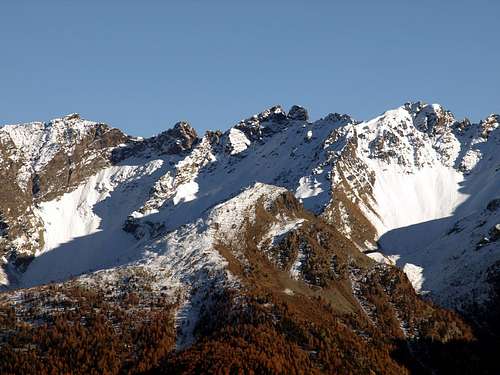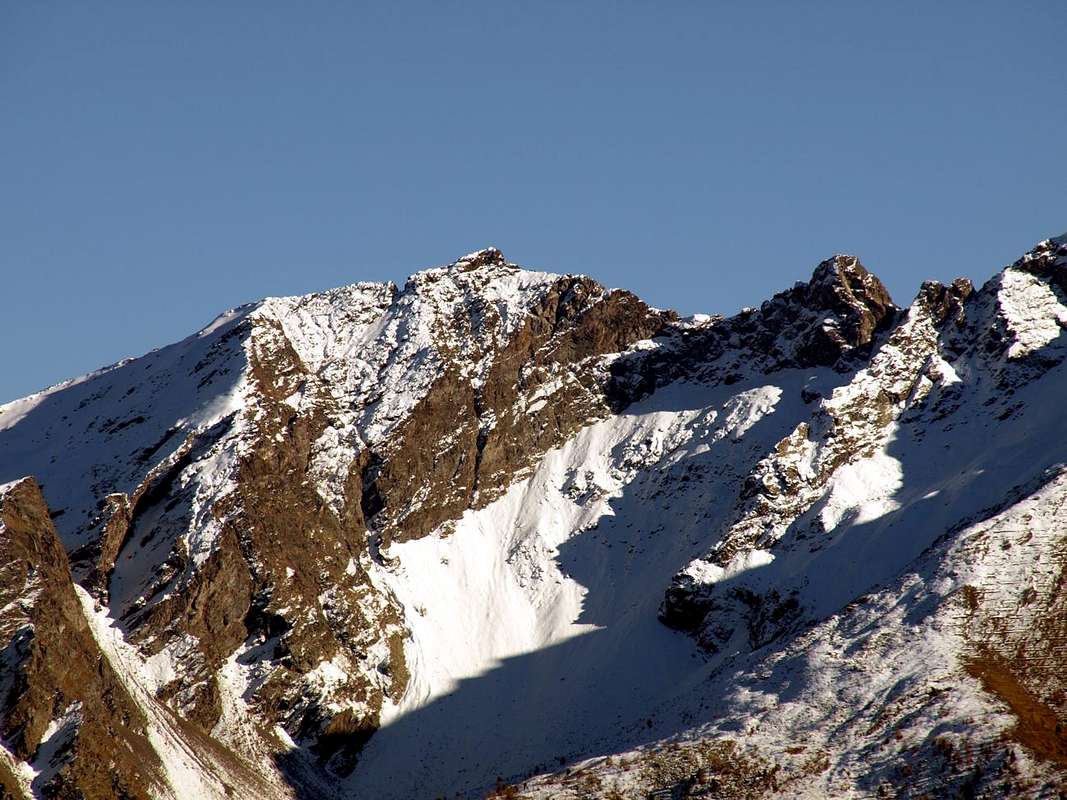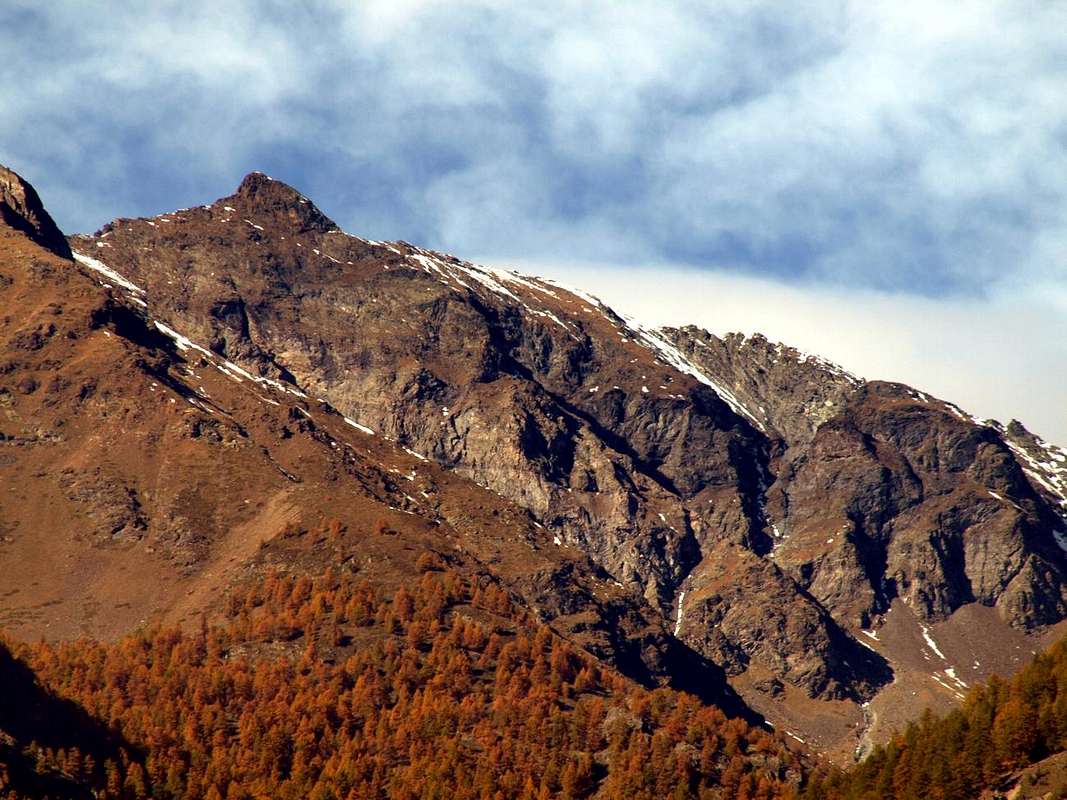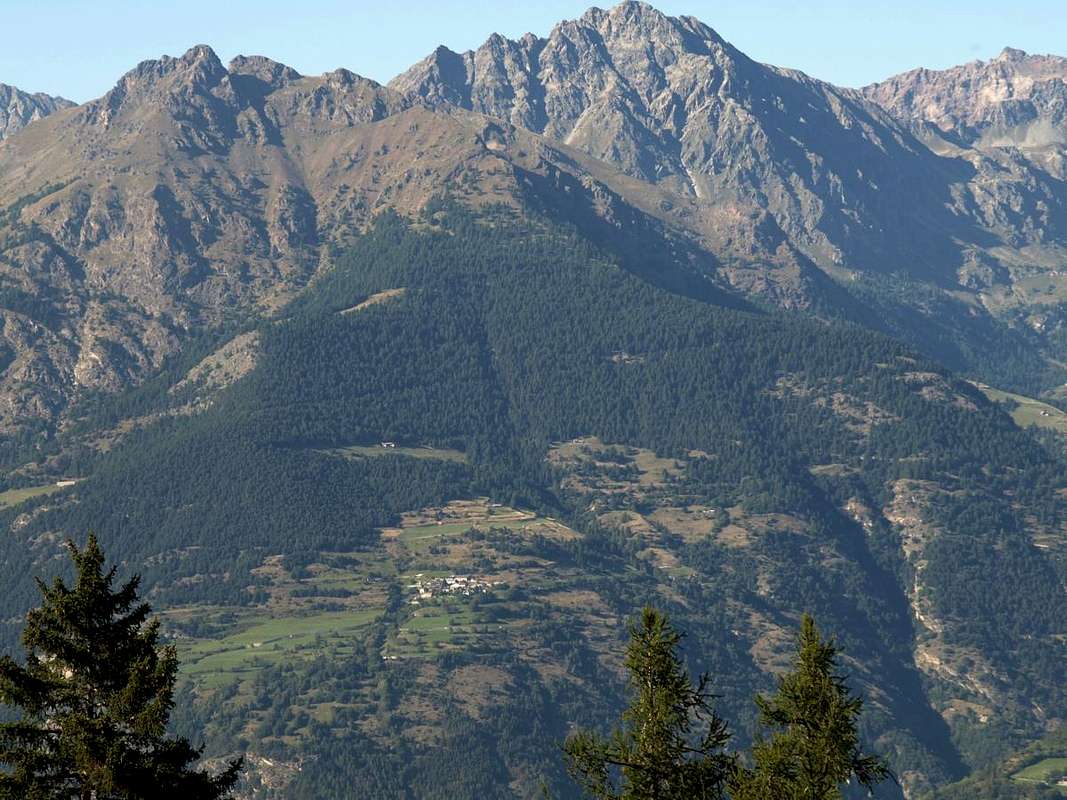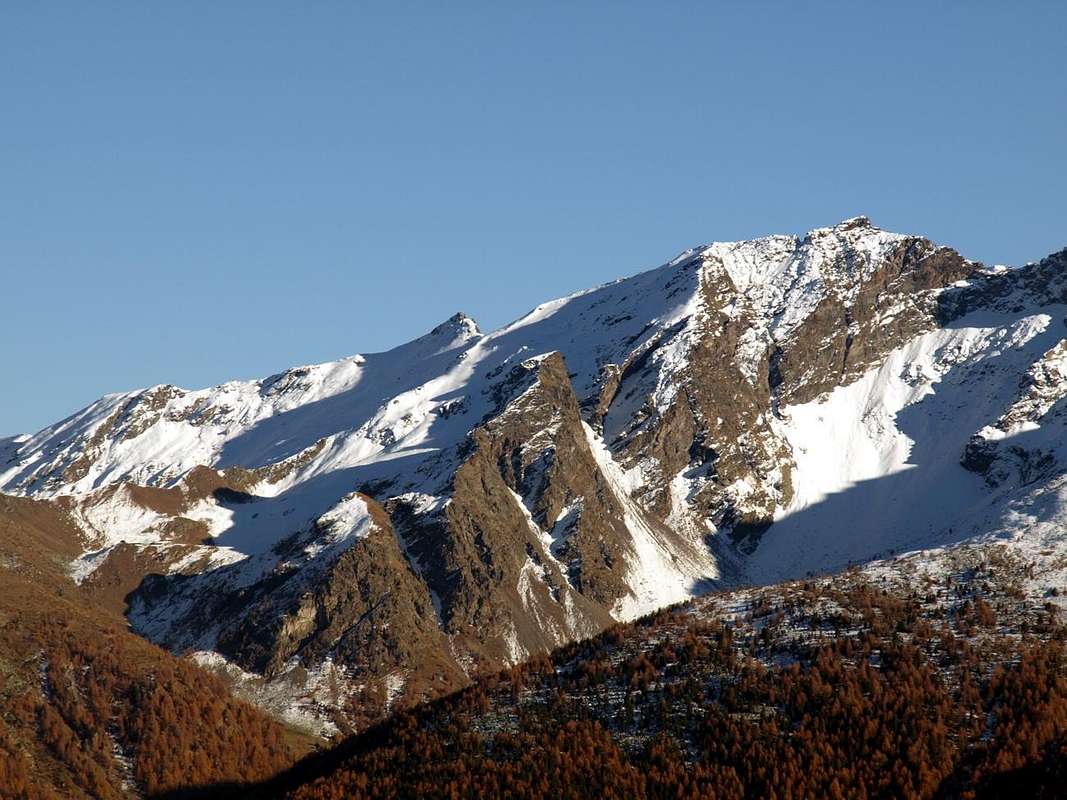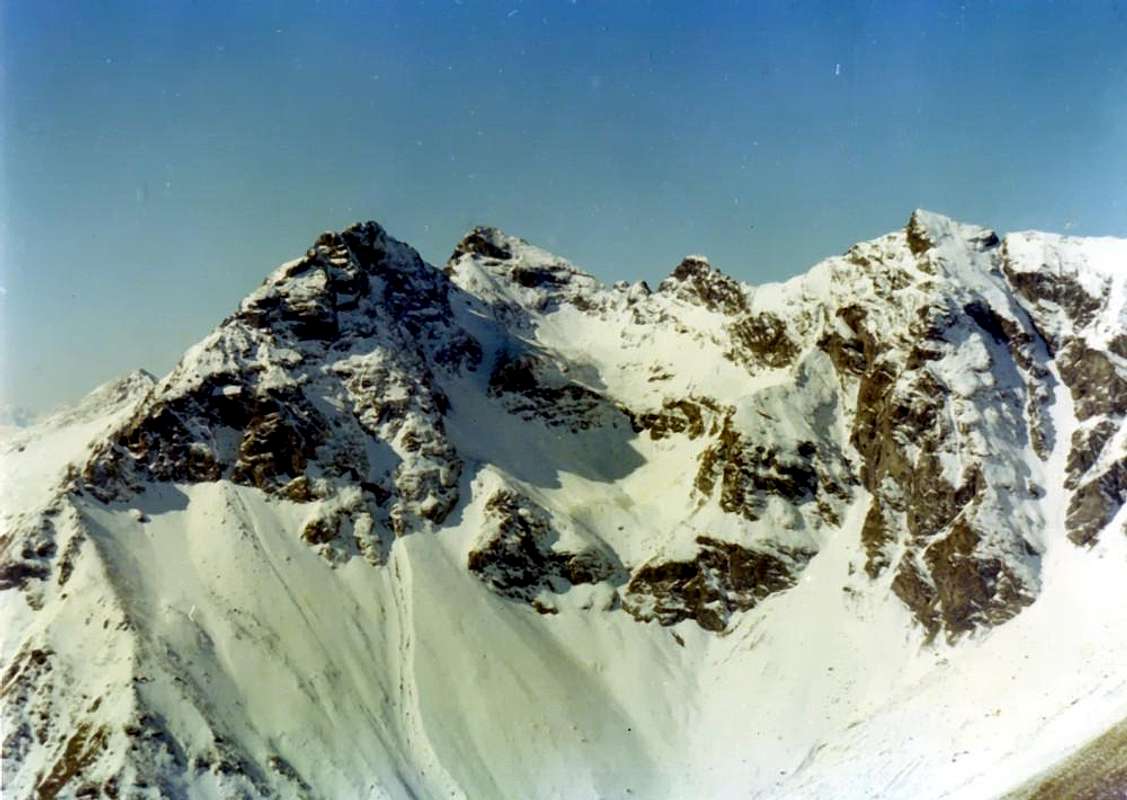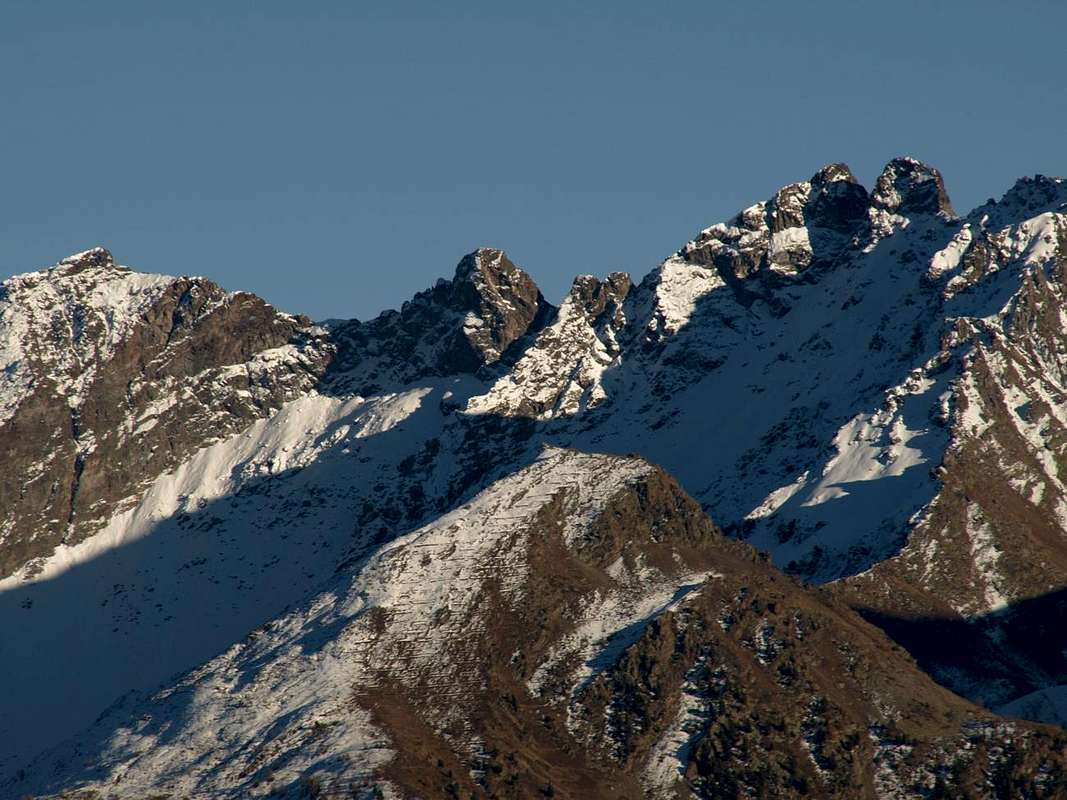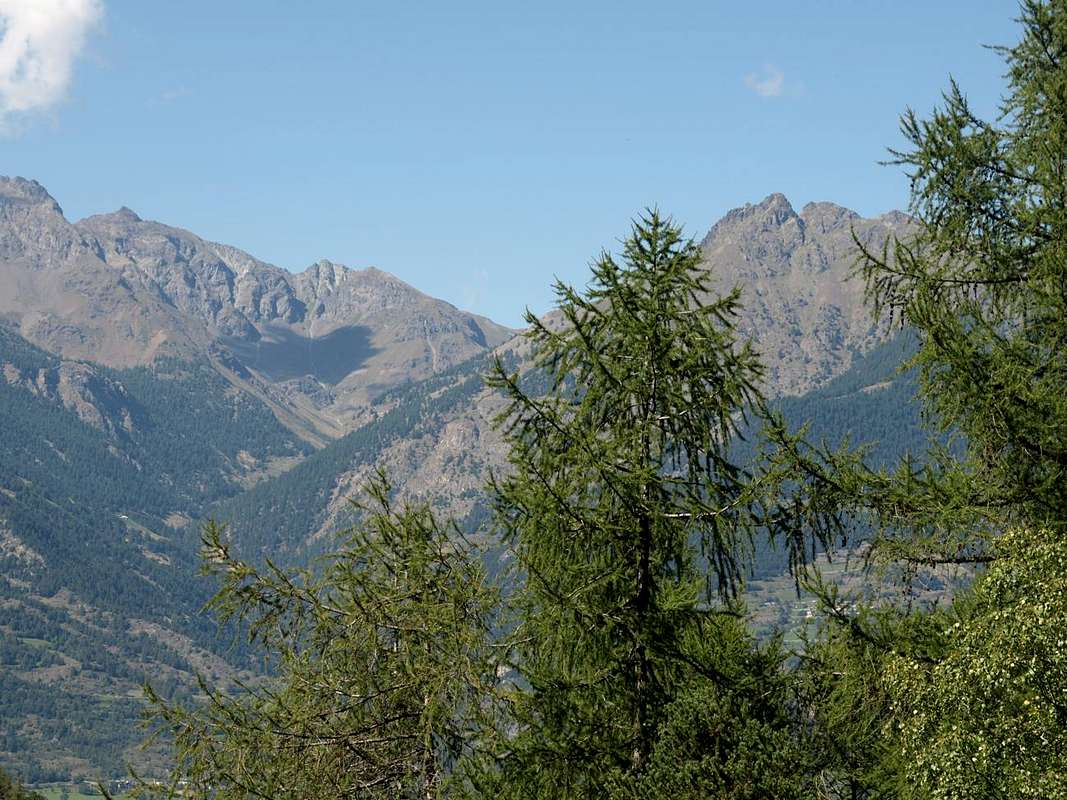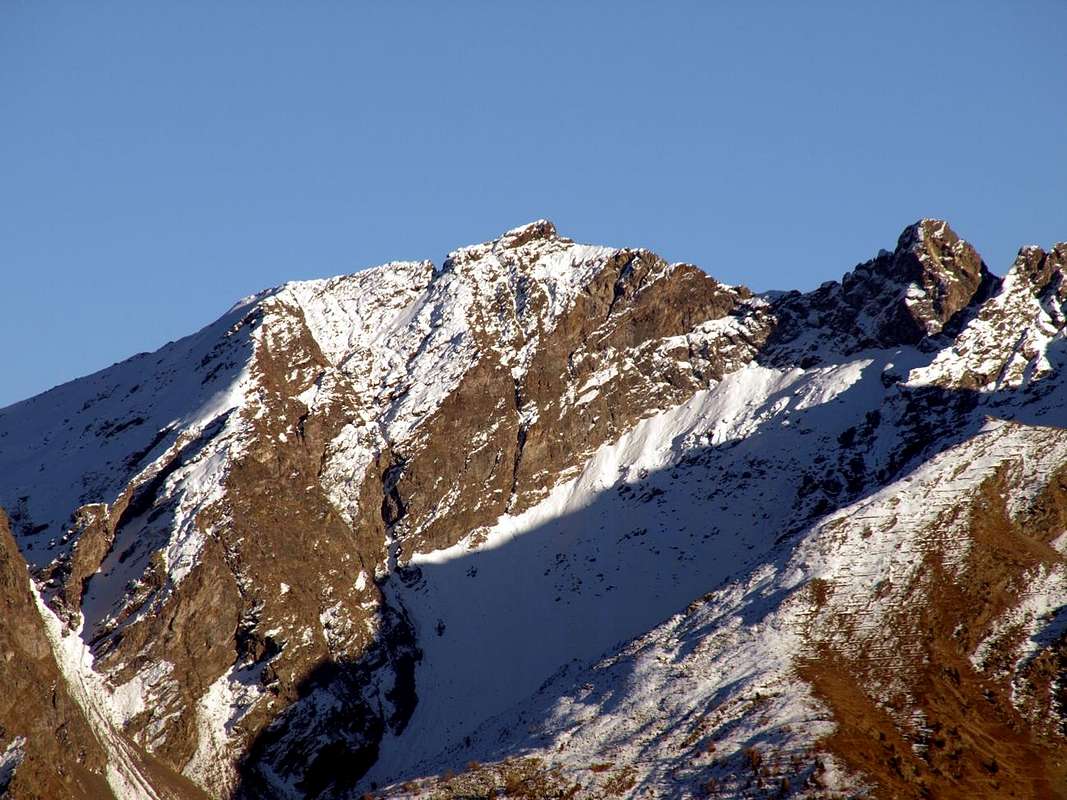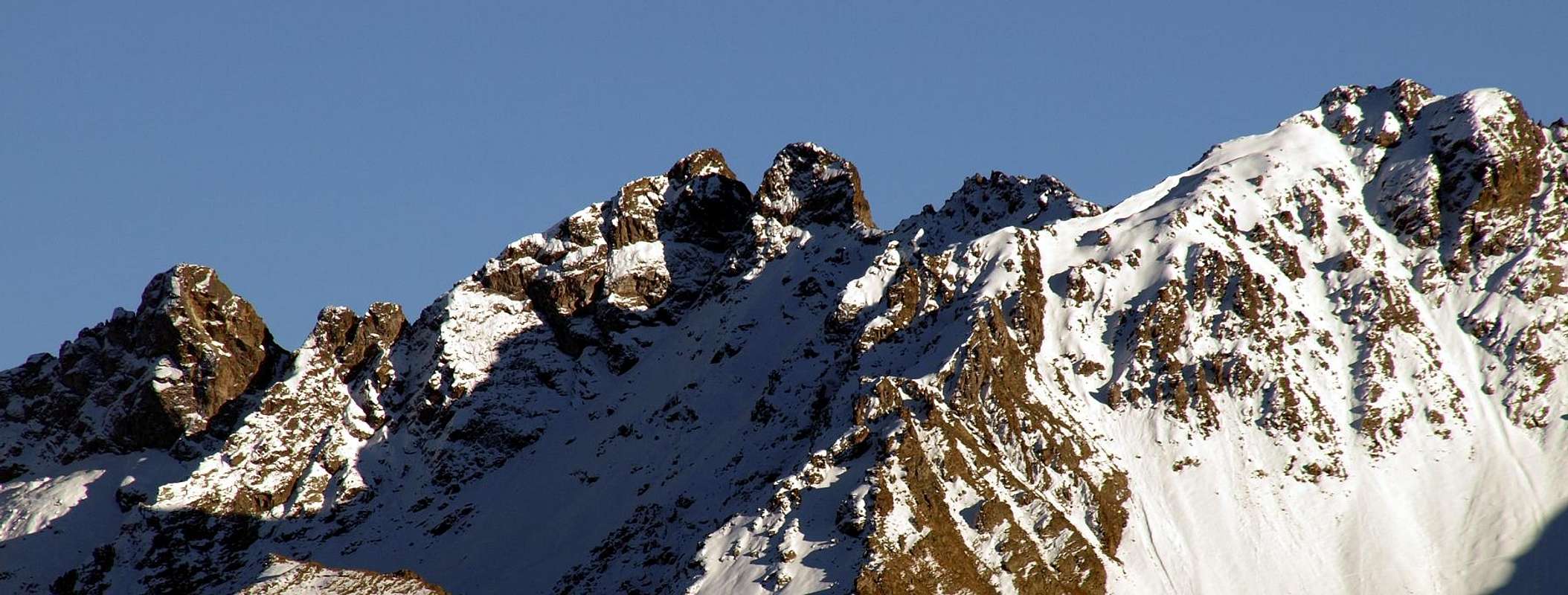-
 3242 Hits
3242 Hits
-
 83.1% Score
83.1% Score
-
 16 Votes
16 Votes
|
|
Mountain/Rock |
|---|---|
|
|
45.81090°N / 7.41142°E |
|
|
Hiking, Mountaineering, Trad Climbing |
|
|
Spring, Summer, Fall, Winter |
|
|
9698 ft / 2956 m |
|
|
Note
La montagna chiama i suoi figli, ed essi rispondono fedelmente al suo appello… Osvaldo Cardellina, Diario alpinistico, 1964-65 Page texts: @ OsvaldoCardellina "Osva", passed away on May 2, 2022. Page owners: Christian Cardellina e Osvaldo Cardellina. Any updates from September 12, 2022: Antonio Giani, page administrator, friend and climbing companion. Testi della pagina: @ OsvaldoCardellina "Osva", scomparso il 2 maggio 2022. Proprietari pagina: Christian Cardellina e Osvaldo Cardellina. Eventuali aggiornamenti dal 12 settembre 2022: Antonio Giani, amministratore della pagina, amico e compagno di salite. |
Overview
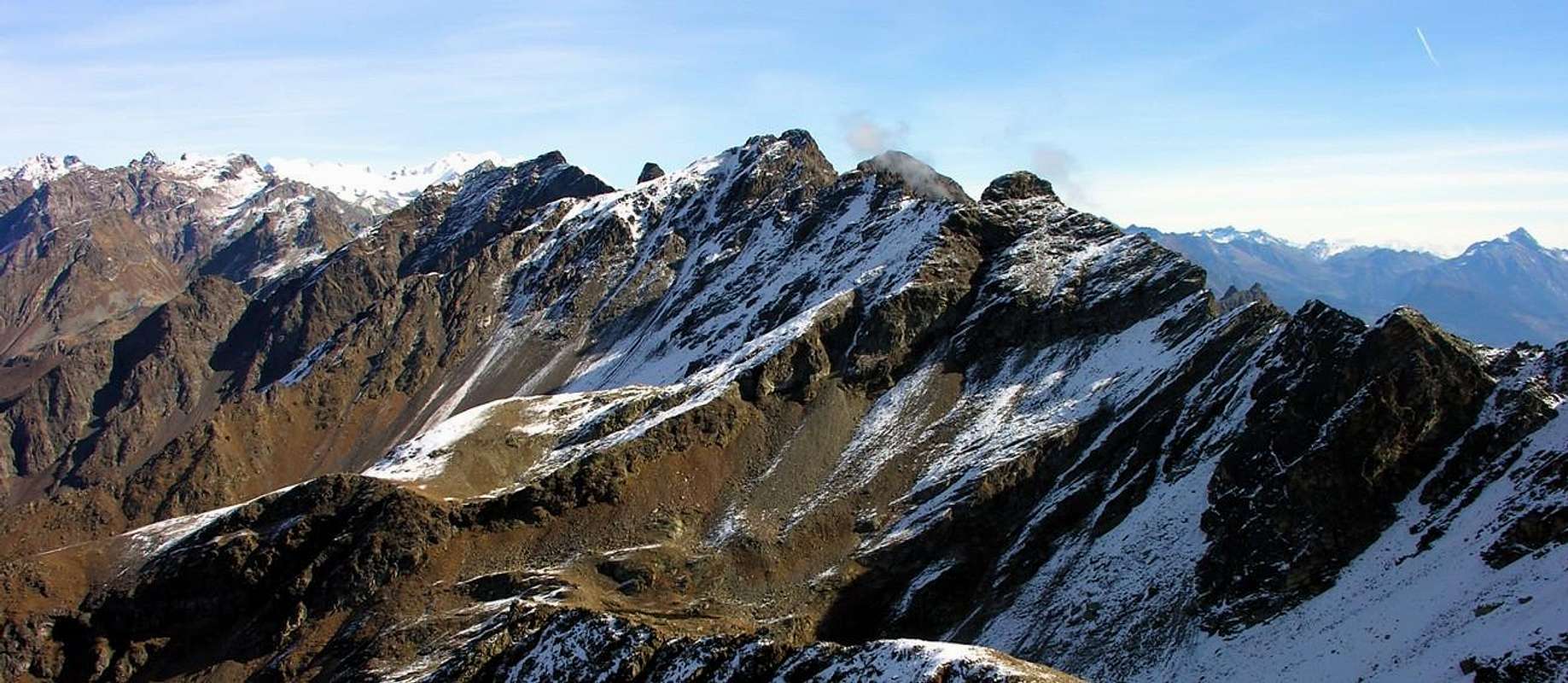
This Summit is a node topographic paramount, in fact from it originate three ridges to the North in the direction of the hills of St. Barthelemy (in the Northeast; 2.638m), Arpeyssaou (to the North; 2.494m) and de la Lliée (towards north-northwest, about 2.500 meters). The first among these is the border with the Comba Verdona to South of the Municipality of Oyace, after reaching the Col de St. Barthelemy the eponymous Peak (2.868m). The other two instead are directed respectively to Becca Morion (2.713m) and to the Alpe de l'Arpeyssaou (2.157m); while the North acts as a divider between the Combe Verdona and Verdzignola, the other or North-northwest is entirely into the interior of this last vallon. A fourth crest finally descends towards the Southwest constituting the boundary between Comba Verdzignola (Valpelline) and the Comba Dèche, addressed to the Municipality of Quart in the Central Valley of Dora Baltea. Then formed by three walls, of which the Eastern, crossed by three horrid gullies, is divided into at least two distinct sides (see picture below), while on the other side or Western is more "flattened" and shaped sole or, if you prefer , as a catfish. Even this is etched by two rocky gullies that certainly does not invite to climb, because it is object of falling stones. Incidentally all the rock of this mountain is somewhat broken, if not crumbling and unstable, allowing more and more delicate climb that difficult. They are "saving" themselves the two main routes on the ridge:
a) - that of the Northeast Ridge or Normal Route that originated from the Hill of St. Barthélemy, although a pass into a notch just below the Summit requires attention;
b) - that of the Southwest Ridge, until now exclusively downhill path, which presents some short sections that forced him to abandon the edge of the ridge forcing small circumvention on the East Slope. This reaches the Quota 2.918 meters or Punta Marie Joseph Henry, the same name the first climber but he not reached but discarding the same on the left (always East), and the Summit of the Eastern (2.971m) double Tsaat a l'Etsena, the highest Summit of the whole area. In contrast it is compensated by exceptional views on the entire Chain of Pennine Alps from Mont Blanc to the Monte Rosa Group, passing Grand Golliaz, Mont Velan, the Combins, Dent d'Herens and Matterhorn. In a final note, to point out the beautiful full crossing that can be extended up to the Col de Fana and subsequent and numerous Beaks (2.880m, 2.951m), with a descent from the narrow Collar 2.925 meters can fall within the above Comba Dèche to Alps Seyvaz or Clavel (2.184m, 1.994m) and from these respectively to the Col St. Barthélemy and Oyace Common in Valpelline or Trois Villes Hamlets.
Topo by Valpelline or Northwest

First Ascents
- First on Summit: Abbé Joseph Marie Henry, lone; (Sep 02, 1912) from St. Barthélemy Hill.
- In Winter: Osvaldo Cardellina, lone, (Dec 28th, 2000), from Tois Villes-Fonteil through Comba Dèche and by Northeastern Ridge round trip.
- Northeasth Ridge: Abbé Joseph Marie Henry, lone; (Sep 02, 1912), in ascent.
- South Crest: Abbé Joseph Marie Henry, lone; (Sep 02, 1912), in descent.
- Traverse to Eastern Tsaat a l'Etsena: Abbé Joseph Marie Henry, lone; (Sep 02, 1912), from St. Barthélemy Hill avoiding left Quota 2.918 meters or Punta Henry.
- Great Complete Traverse: from St. Barthélemy Hill-Becca Conge by Northeast Ridge-Quota 2.918 meters or Punta Henry crossing North/South-Eastern Tsaat à l'Etsena by North Crest-Pass and Becchi di Fana integral traverse round trip (Western Antesummit 2.945 meters, Collar 2.925 meters, Central 2.951 meters, Second 2.945 meters, Third 2.940 meters, Fourth or Eastern 2.938 meters): Osvaldo Cardellina and Giuseppe Lamazzi (Aug 20th, 1978); in descent North Face of Collar 2.925 meters.
Getting There
BY CAR:
- From TORINO, MILANO, etc: Motorway A5. Exit at IVREA or Quincinetto (PIEDMONT).
- From IVREA Town: in West to Pont Saint Martin, Donnas, Bard, Verrès, St. Vincent, Châtillon, Nus, Quart, St. Christophe, Aosta and Roisan Municipalities. From Courmayeur Resort: in East to Morgex, La Salle, Saint Pierre, Sarre, Aosta, Roisan and Saint Chistophe Municipalities.
- From Aosta Town towards Quart and Nus Municipalities
- 1) - By Quart-Villair to Epilaz, Argnod Villages or from SS.26 nearby La Plantaz (540m), with Regional and Municipal Roads, towards Chétoz, Vignil, Fornail, Ville sur Nus-Planeville, Buignod, Porsan Villages to Trois Villes-Avisod Village (1.398m). From this towards La Seyvaz, Valchourda Alps (2.206m), in Comba Dèche.
- 2) - From Quart to Fonteil with previous route; this through dirt road, towards La Seyvaz (2.184m), Valchourda Alps (2.392m), in Comba Dèche. From Nus-La Plantaz in State Road to Ville sur Nus-Planeville (1.113m); from this, towards Buignod, Avion (1.312m) Villages. Also from Porsan through Trois Villes (1.398m), Avion, fork (1.250m) to Effraz Village (1.487m), with Municipal Roads. From this to Ronc (1.737m), Machaussy Alps, in Effraz Comba. From Aosta towards Valpelline Valley
- 3) - From Aosta City with State Road n°26 towards the alternative before Gignod Municipality; from this through the Regional Road in Northeast towards Valpelline Commune (580m) and always through Regional Road, towards Oyace Commune (1.316m-1.377m). From these to Southern Vallons:
- a) - by Valpelline towards Verdzignola and
- b) - by Oyace towards Verdona Vallon.
- From FRANCE: through the Mont Blanc Tunnel to Entrèves-crossroads to Vény/Ferret Valleys - Mountain Guides of Courmayeur - La Saxe Rock Gym - Courmayeur. By Little Saint Bernard Pass, closed since November until half May to La Thuile Valley - Pré Saint Didier - Courmayeur. It is not necessary to take Motorway A5: you can drive on SS.26, in the direction of AOSTA - IVREA - TURIN.
BY PLANE:
- Aeroporto "Corrado Gex" Saint Christophe (Aosta).
Approach and Route
Difficulties & Equipment
This route can be considered EEA/F+/PD- (Experts Hikers and Mountaineers); BSA in winter (even by Ski).Campings
Remember that free camping is forbidden (except for emergency reasons, over 2.500m, from darkness until dawn).Mountain Condition
- Meteo: you can find all the needed informations at the official site of the Valle d'Aosta Region:
- Valle d'Aosta Meteo
Books and Maps
BOOKS:
- "Guida della Valpelline" de l'Abbè Joseph-Marie Henry - Societè Editrice Valdotaine 1925 II Edition e Collana Reprint Musumeci (1986).
- "Guida dei Monti d'Italia - Alpi Pennine (Vol. 2)" di Gino Buscaini - Club Alpino Italiano/Turing Club Italiano, Luglio 1970 (In Italian).
- "80 itinerari di Escursionismo Alpinismo e Sci Alpinismo in Valle d'Aosta", di Osvaldo Cardellina, Ed. Musumeci, Giugno 1977 (in Italian); seconda Ed. Luglio 1981; terza Ed. Luglio 1984; (in French), prima Ed. Febbraio 1978; seconda Ed. Marzo 1980.
- "Dove andiamo in montagna? in Valle d'Aosta" di Domenico Caresio Edit. Tipografia Ferraro Ivrea, Marzo 1996.
- "Ascensioni 1964-1969" Diario Alpinistico di Ilario Antonio Garzotto (unpublished).
- "Diari Alpinistici" di Osvaldo Cardellina e Indice Generale accompagnato da Schedario Relazioni Ascensioni 1964-2019 (unpublished).
MAPS:
- Kompass "Breuil/Cervinia-Zermatt" Carta turistica 1:50.000.
- I.G.C. Istituto Geografico Centrale "La Valpelline" (carta n° 115) Map1:30.000.
- I.G.M. Istituto Geografico Militare - Map1:25.000.
- L'Escursionista Ed. Rimini "Gran San Bernardo-Ollomont" (carta n° 5) 1: 25.000.
Important Information
- REGIONE AUTONOMA VALLE D'AOSTA the official site.
- FONDAZIONE MONTAGNA SICURA Villa Cameron, località Villard de la Palud n° 1 Courmayeur (AO) Tel: 39 0165 897602 - Fax: 39 0165 897647.
- SOCIETA' DELLE GUIDE DELLA VALPELLINE Etroubles-Strada Nazionale, n° 13 - Tel +39 0165 78559 - Valpelline-Loc Capoluogo, n° 1 - Tel +39 0165 713502 (AO) Italia.
- A.I.NE.VA. (Associazione Interregionale Neve e Valanghe).
Useful numbers
- Protezione Civile Valdostana località Aeroporto n° 7/A Saint Christophe (Ao) Tel. 0165-238222.
- Bollettino Valanghe Tel. 0165-776300.
- Bollettino Meteo Tel. 0165-44113.
- Unità Operativa di Soccorso Sanitario Tel. 118.




